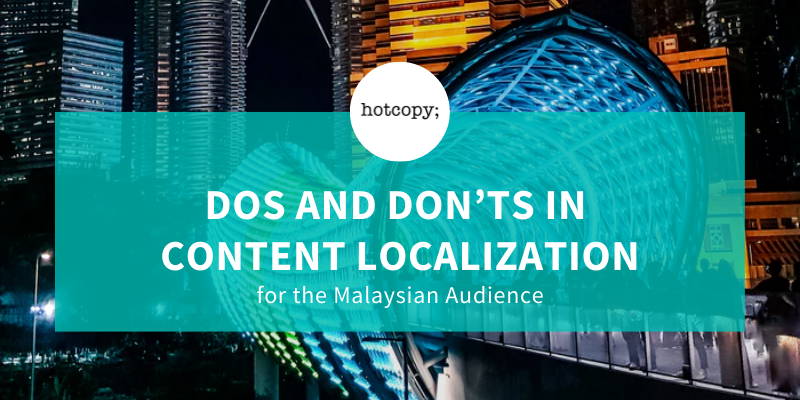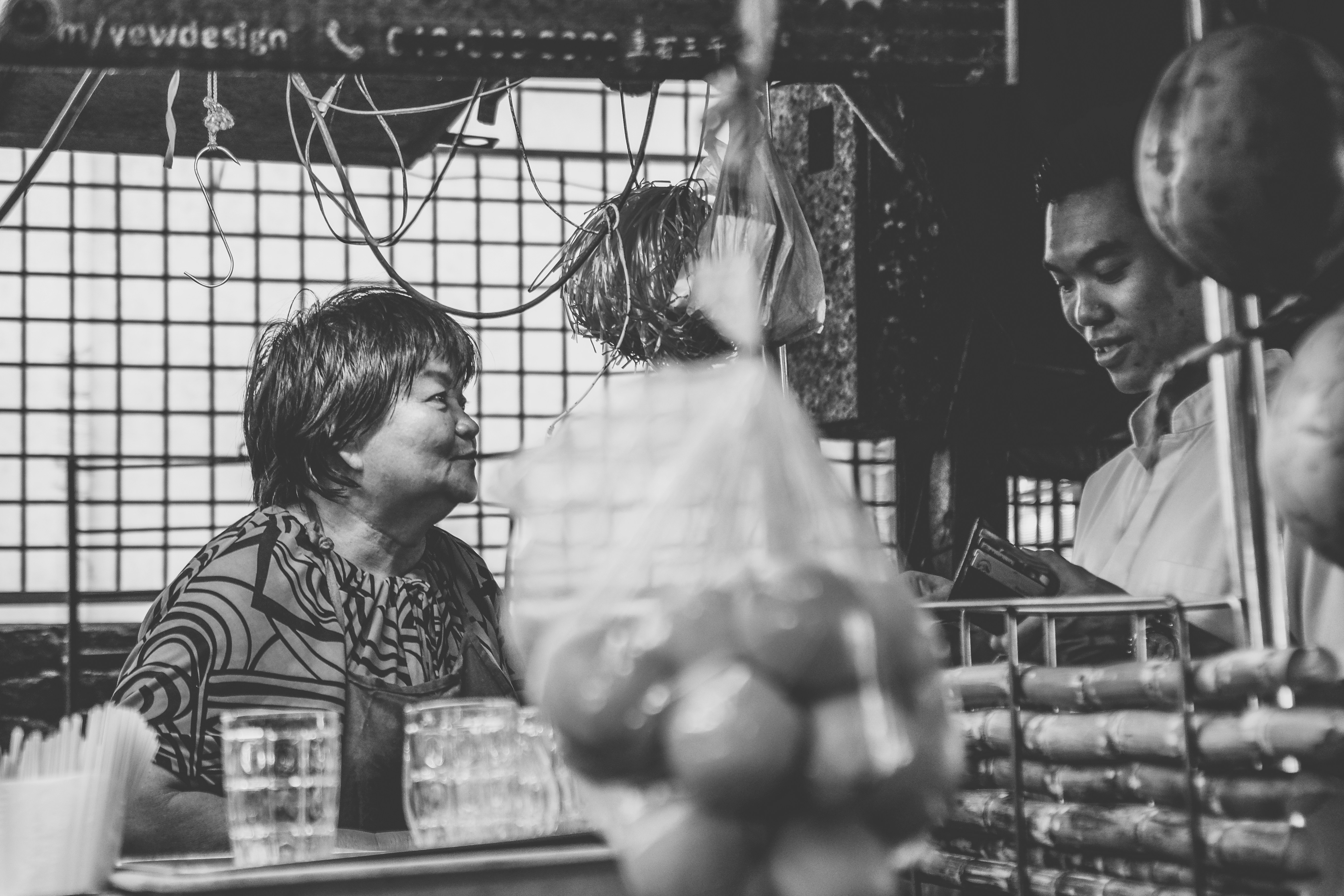Language 101: DOs And DONT'S In Content Localization For The Malaysian Audience

Are you someone who’s looking to write English content for Malaysians? Are you still unsure of the benefits of content localization, or how to do content localization for the Malaysian audience?
A 2018 research has found that 64% of buyers value localization. Yet, marketers who put content localization on their priority list only amounted to 26%. It’s a marketing strategy that’s still relatively underused. But don’t worry, the fact that you’re reading this means you’re ready to learn the tricks of the trade and avoid content localization mistakes!
Importance of Localized Content
Localization can give your content a better chance of getting more views, and for those viewers to invest more time understanding it. It’s more than simple translation (although translation itself isn’t all that simple).
Of course, visuals are important, but it’s the words that we’ll be focusing on today. Why? Because language contains the call of action - the end goal of what you want your potential customers to do.
So here are some dos and don’ts if you’re looking to localize content for the Malaysian audience. They are divided into four tips: translation, slang, cultural aspects, and copyright issues.
Each element will have both suggestions you may find useful and also things to avoid if you want to ensure the best localization possible.
1. Translation
DOs
You may not know this yet, but many Malaysians speak more than two languages. They need to be fluent in Bahasa Melayu since their early education and also use English for work. Not to mention they may speak Tamil or Chinese or any other indigenous language in their household.
Photo by Mimi Thian on Unsplash
This means most of them code-switch on a daily basis. Luckily for you, it means you’re allowed to keep some parts of your marketing content in English.
You don’t need to translate all of it. Pinpoint what works best in English and keep your brand identity intact!
DON’Ts
Nearly 60% of potential customers say it’s more important for them to get information in their native language compared to item pricing. This means the translation has to be accurate.
Do NOT skip on translating item information such as dimensions, usage, care, and insurance policies. Lack of information is a definite deal-breaker for Malaysians, who see information accessibility as an important extension of customer service.
2. Slang
DOs
In the true spirit of Malaysian hospitality, they usually refer to adults as “uncle” and “aunty,” so having a familial tone works well.
Photo by Aaron Lee on Unsplash
Whenever possible, try and use some of the local Malaysian slangs along with English. For example, “jom” roughly means “let’s go!” while “potong stim” translates to “killjoy.”
Remember to use these slangs in context! Just like any other language, some words might have dual meanings or read differently depending on the context they are used in.
If you’re unsure of how it would read, it’s always a good idea to ask a native speaker.
DON’Ts
While representation is good, don’t mix too many slang words from different languages. It may get confusing to some readers, especially for expatriates or Malaysians who only speak two languages. It’s better to “split” it into several different posts.
3. Cultural Aspects
DOs
If you have the resources, curate your content for different target markets. You may have three posts marketing the same thing but targeted for different ethnicities, so everyone can have something that makes them feel at home.
Moreover, Malaysians - especially the younger generation - will also notice if a brand is culturally empowering, so keep this in mind!
DON’Ts
You may attempt to infuse your content with cultural references to make it seem familiar and comforting for the target audience. However, when using a mascot or character - especially if it’s an indigenous character - be careful not to offend the society.
Photo by Leslie Low on Unsplash
Keeping in mind that Malaysia is also a culturally diverse country, you should do a little bit of research, so you don’t mistakenly use cultural attributes that are sacred or reserved only for certain periods or certain people.
Also, white-washing is quite a sensitive topic, so avoid it at all costs. It’s one of the most common content localization mistakes. If you’ve unfortunately done this by accident, fret not! A good-natured, genuine apology works wonders. Just be sure to steer clear of it in the future.
4. Copyright Issues
DOs
Intellectual property rights are something to look out for as well. Hire a trusted advisor on local laws and common practices.
Photo by Bill Oxford on Unsplash
Sometimes a brand is famous because of a commercial and they have a tagline that’s deeply ingrained in their branding. It’s advisable to search for terms you might use in your content and see what pops up there.
You don’t want your post to get lost in an ocean of similar-sounding content or be overpowered by an existing brand presence in Malaysia.
DON’Ts
This is self-explanatory, but don’t undermine the costs of skipping copyright issues, or any form of intellectual property rights for that matter.
A garment wholesaler learned this lesson the hard way when she was charged with an RM300,000 fine for having 150 “Upin & Ipin” T-shirts. The wholesaler didn’t obtain copyright permission beforehand from Les’ Copaque Production.
Never skip this step because the consequences may be dire. Even if you know a caption or catchphrase isn’t copyrighted, make sure it’s not dominantly used by one brand. Otherwise, viewers may think you’re a copycat or not “genuine” enough and run away.
Conclusion
And there you have it, folks! A simple guide for framing your content that will surely catch the attention of Malaysian locals!
Remember that in order to harness the full benefits of content localization, you need to make the transition seamless. The audience needs to feel like they’re buying from a local brand.
Don’t forget that when you’re writing for Malaysians, you’re doing content writing for different target markets. Hopefully, after reading the dos and don’ts above, you’ll have a clearer picture of how to do content localization for the Malaysian audience!
Photo by Nazarizal Mohammad on Unsplash
Want to save time and money on the content for your brand?
Try our hotcopy; AI platform to optimize your content production workflow today.
The first few words are free for you to try.






